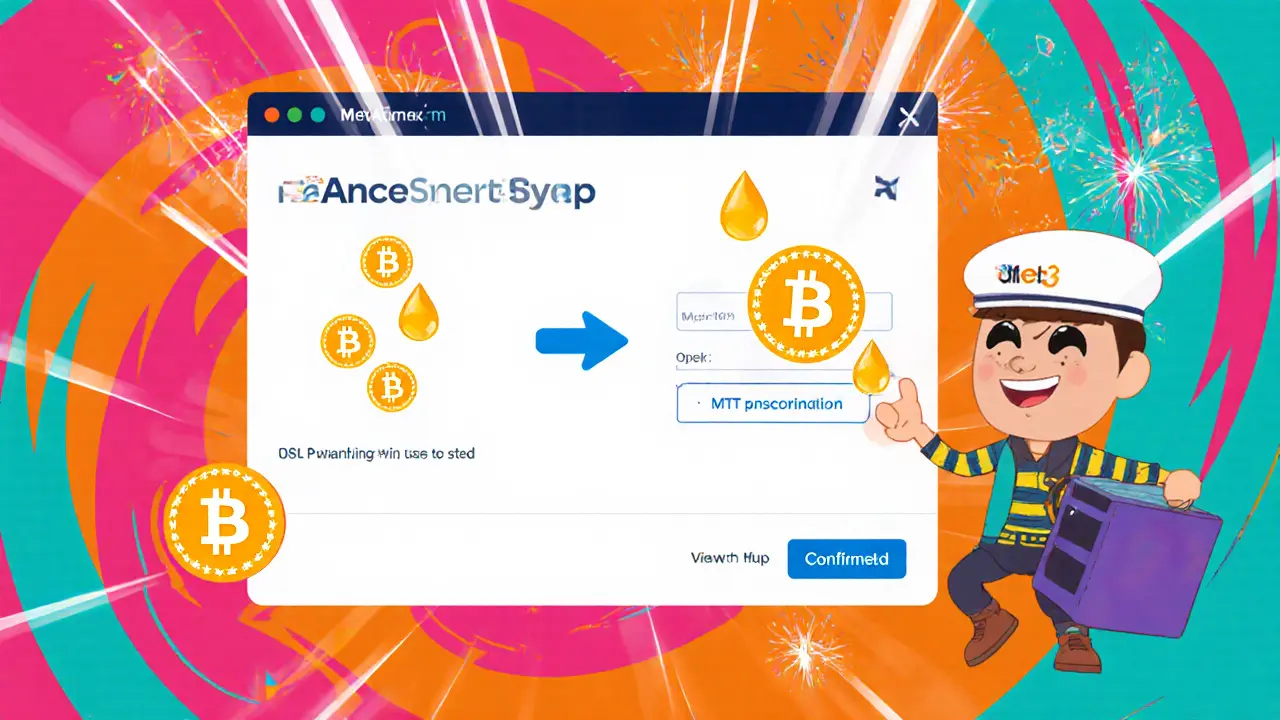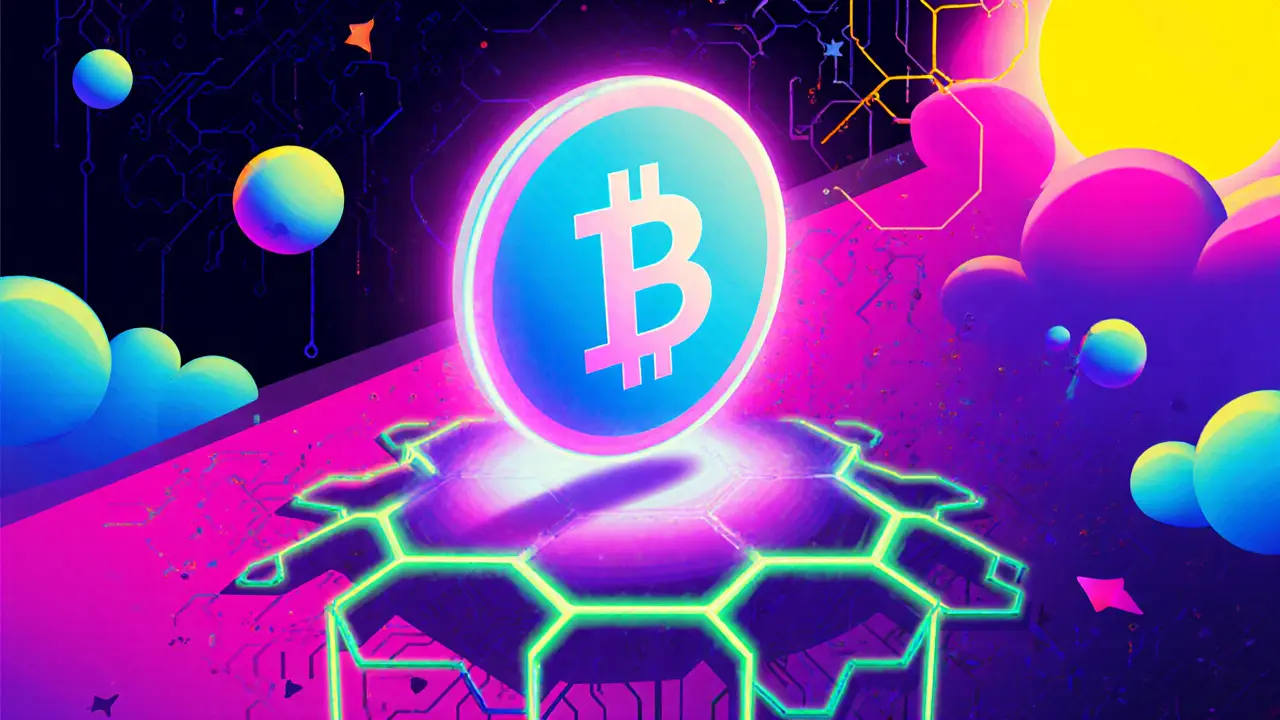MTT Token Value Calculator
Current Market Analysis
MTT trades across multiple DEXs with significant price variations:
$38.36 (Binance reference) to $97.39 (Phemex)
24h volume: $2.39M (Liquidity Finder) vs $250K (Phemex)
Calculate Your MTT Value
Your Estimated Value
Utility Value Assessment
Risk Assessment
Imagine a crypto coin that launched in 2025, trades only on decentralized exchanges, and claims to power an AI‑driven DeFi platform-but its circulating supply is listed as zero. That paradox describes METTI TOKEN (MTT) a utility token built on the BNB Smart Chain (BEP‑20) that underpins the OMET ecosystem. If you’re wondering whether MTT is a genuine investment opportunity or just hype, this guide breaks down everything you can verify as of October 2025.
What is METTI TOKEN (MTT)?
METTI TOKEN, abbreviated MTT, is marketed as the native utility token for the OMET ecosystem, an AI‑focused decentralized finance suite developed by the MettiTech Group. The token follows the BEP‑20 standard, meaning it runs on the BNB Smart Chain, benefitting from low transaction fees and fast block times. Its contract address-0x166c52d0633484C9ac0203dCBDc97bC32Aaef720-is the same across CoinCarp and Binance’s non‑listing page, confirming the on‑chain identity.
Technical specs and supply confusion
Public data sources disagree on MTT’s supply figures. Liquidity Finder lists a current supply of 4,998,730 tokens with an alleged 0 circulating, while Phemex reports a total of 5 million and again 0 circulating. CoinCarp mentions a maximum supply of 4.5 million. This inconsistency isn’t typical for mature projects and suggests either a data‑aggregation error or an opaque token‑distribution model. Regardless, the token’s price is being quoted on several platforms, so some amount must be moving on‑chain.
Where can you actually buy MTT?
MTT isn’t listed on major centralized exchanges like Binance or Coinbase. The primary trading venue is PancakeSwap V2 on BSC, where users swap BNB for MTT via a liquidity pool. MEXC claims to support “various methods,” but in practice the process still requires a Web3 wallet (MetaMask, Trust Wallet, etc.) and the ability to approve BEP‑20 token transactions.
Because the token is confined to DEXs, the buying process looks like this:
- Set up a BSC‑compatible wallet and fund it with BNB.
- Navigate to PancakeSwap, select the MTT/BNB pair, and enter the amount of BNB you want to trade.
- Confirm the transaction, paying the usual BNB gas fee.
- Your MTT appears in the wallet once the transaction is finalized.
Newcomers often stumble over the need to add the token contract manually, but most wallets will prompt you after the first swap.

Price volatility and market data
Across eight data aggregators, MTT’s price swings dramatically: from $38.36 on Binance’s reference page (though not listed) to $97.39 on Phemex, with most sources clustering around $45‑$55. Trading volume also varies-Liquidity Finder reports $2.39 million in 24‑hour volume, while Phemex shows under $250 k. Such fragmentation means the “real” market price is hard to pin down, and arbitrage opportunities can appear and disappear within minutes.
Recent price movement has been negative: -4.59% over the last 24 hours on Liquidity Finder, -12% week‑over‑week on Coinbase’s snapshot, and -14.22% over seven days on Phemex. This downtrend reflects low liquidity and limited buyer interest.
How does MTT fit into the OMET ecosystem?
The OMET ecosystem is an AI‑powered DeFi platform that bundles services like MettiPaySecure a payment gateway for secure crypto transactions and Metti IRA a retirement‑saving product built on blockchain. MTT is meant to act as the medium of exchange for fees, staking rewards, and governance votes within these services. In theory, holding MTT lets you access discounted transaction fees on MettiPaySecure and participate in decision‑making for future OMET features.
However, concrete documentation-whitepapers, roadmaps, or SDKs-is scarce. The only official channels listed are a Facebook page, a Twitter account, and a Telegram group under the ONFA brand. Without transparent metrics on user adoption or transaction volume inside the ecosystem, it’s difficult to verify the token’s utility beyond speculative trading.
Risks and red flags
Several warning signs emerge from the data:
- Zero circulating supply reported by multiple aggregators despite active trading, raising concerns about data accuracy or hidden token locks.
- Absence from major centralized exchanges, limiting exposure and liquidity.
- Inconsistent supply figures (4.5 M vs 5 M) and market‑cap calculations that often show $0.00.
- Lack of independent analyst coverage-no mentions on CoinDesk, Cointelegraph, or The Block.
- Minimal community engagement; polls on Phemex received zero responses.
Investors should treat MTT as a high‑risk, early‑stage token. Conduct thorough on‑chain analysis-check the token’s holder distribution on BscScan, verify liquidity pool depth on PancakeSwap, and monitor the official Telegram for real‑time updates.
Potential use cases if the ecosystem delivers
Should the OMET suite gain traction, MTT could see real utility in three areas:
- Fee discounts on MettiPaySecure transactions, encouraging merchants to adopt the payment gateway.
- Staking rewards that lock MTT to earn a share of platform revenue.
- Governance voting for protocol upgrades, giving token holders a voice in the roadmap.
These scenarios hinge on the launch of functional products and clear incentive structures-both of which remain unproven as of October 2025.
How to stay informed about METTI TOKEN
Because official information is scattered, set up a simple monitoring routine:
- Follow the ONFA Twitter handle for announcements.
- Join the Telegram channel for community questions.
- Track the contract address on BscScan to see real‑time transfers and holder counts.
- Use a DEX aggregator (e.g., DEXTools) to watch price spread across PancakeSwap, MEXC, and other niche exchanges.
Staying vigilant will help you spot sudden liquidity drops or potential rug‑pull signals before they become irreversible.
Bottom line
METTI TOKEN (MTT) is a BEP‑20 utility token tied to an ambitious AI‑DeFi vision, but the lack of transparent data, limited exchange listings, and confusing supply metrics make it a speculative gamble. If you’re comfortable with high risk and enjoy digging into on‑chain analytics, MTT might be worth a small experimental allocation. For most investors, waiting for clearer utility proof or broader exchange adoption is the safer play.
What blockchain does METTI TOKEN run on?
MTT is a BEP‑20 token built on the BNB Smart Chain, which offers fast transactions and low fees compared to Ethereum.
How can I buy METTI TOKEN?
The primary way is through PancakeSwap V2 on BSC. You’ll need a BSC‑compatible wallet, some BNB for gas, and then swap BNB for MTT using the token’s contract address.
Why do data sites list a 0 circulating supply?
Most aggregators pull the “circulating supply” field from the token contract or project disclosures. MTT’s developers haven’t published a clear figure, so platforms default to 0, even though trading activity shows tokens are moving.
Is METTI TOKEN listed on any centralized exchange?
No. Binance, Coinbase, and other major CEXs all show MTT as “not listed.” The token is currently only available on decentralized venues.
What utility does MTT provide inside the OMET ecosystem?
MTT is intended for fee discounts on MettiPaySecure, staking rewards, and governance voting for OMET platform upgrades. The actual implementation remains sparse, pending further development.

Write a comment